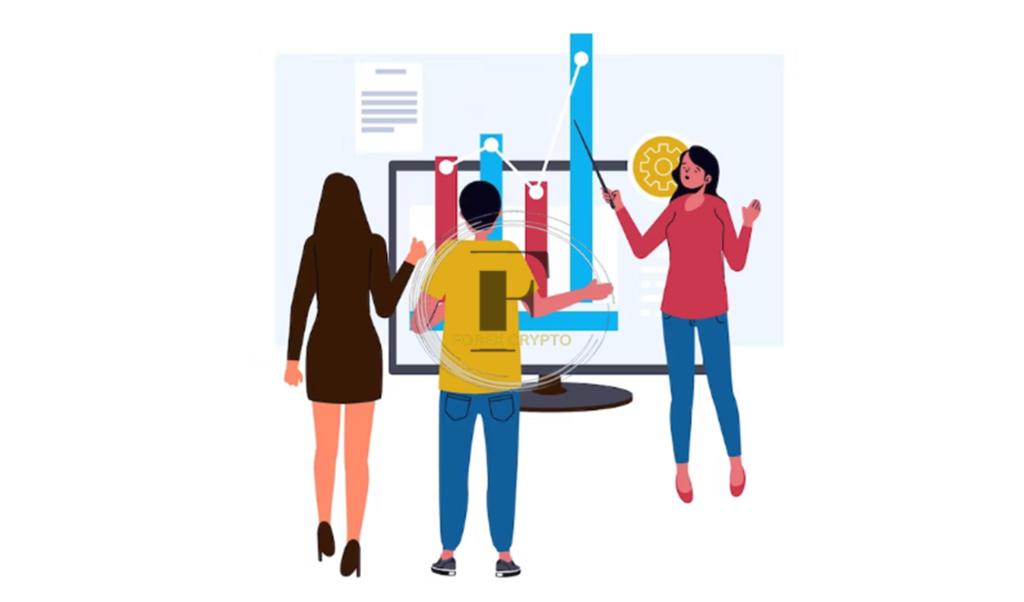Setting and achieving economic goals with monetary policy can be complex and difficult, It often requires a careful balancing of different objectives, such as maintaining low inflation, supporting full employment, and promoting economic growth.
The Federal Reserve, the central bank of the United States, is responsible for formulating and implementing monetary policy, The Fed uses a variety of tools to influence the supply of money and credit in the economy, which in turn affects economic activity, inflation, and interest rates.
Monetary policy can be a powerful tool for achieving economic goals, but it is not without risks and limitations, When employing monetary policy, policymakers must be mindful of potential unintended consequences and undesirable side-effects.
- When it comes to setting and achieving economic goals, monetary policy is key.
- Without a monetary policy in place, it’s difficult to ensure that economic goals are met.
- A good monetary policy will help to ensure that inflation is kept in check, while also providing the tools to help stimulate the economy when needed.
- Interest rates are one of the most important tools available to the monetary policymaker.
- By keeping interest rates low, it becomes easier for businesses to expand and hire, and for consumers to borrow and spend.
- In times of economic turmoil, the monetary policymaker can use tools such as quantitative easing to help stabilize the economy.
- Ultimately, the goal of monetary policy is to help the economy grow in a sustainable way, while also keeping inflation under control.

When it comes to setting and achieving economic goals, monetary policy is key
Monetary policy is the set of actions that a central bank takes to manage its country’s money supply and achieve economic goals, These goals may include stabilizing prices, boosting economic growth, or managing unemployment.
Central banks use a variety of tools to achieve these goals, including changing interest rates, buying and selling government bonds, and manipulating the money supply, When it comes to setting and achieving economic goals, monetary policy is key.
Central banks use monetary policy to influence the demand for and supply of money in the economy, which in turn affects economic activity, By carefully managing the money supply, central banks can help ensure that prices are stable, economic growth is strong, and unemployment is low.
There are a number of factors that central banks must take into account when setting monetary policy, These include inflation, economic growth, employment, and international factors.
Central banks must carefully balance these factors in order to make the best decisions for the economy, Monetary policy is an important tool for setting and achieving economic goals.
Central banks use it to influence the demand for and supply of money in the economy, which in turn affects economic activity, By carefully managing the money supply, central banks can help ensure that prices are stable, economic growth is strong, and unemployment is low.

Without a monetary policy in place, it’s difficult to ensure that economic goals are met
It is difficult to ensure that economic goals are met without a monetary policy in place, Monetary policy provides a framework within which economic goals can be set and achieved.
Without a monetary policy, there would be no guidance on how to set economic goals or how to achieve them, This would make it difficult to ensure that economic goals are met.
A good monetary policy will help to ensure that inflation is kept in check, while also providing the tools to help stimulate the economy when needed
When formulating a monetary policy, a central goal of any responsible policymaker should be to ensure that inflation is kept in check, By keeping inflationary pressures in check, policy can help to support price stability and economic growth.
In addition, maintaining low inflation can help to keep borrowing costs down, making it easier for businesses and households to service their debt, In order to keep inflation in check, monetary policy needs to be proactive and responsive to changes in economic conditions.
When inflationary pressures start to build, the central bank needs to take steps to tighten monetary policy and raise interest rates, This will help to cool off the economy and keep inflation from rising further.
Similarly, if the economy starts to slow down, the central bank can lower interest rates in order to stimulate growth, By taking steps to keep inflation in check and providing the tools to help stimulate the economy when needed, monetary policy can play a key role in achieving economic goals.
Interest rates are one of the most important tools available to the monetary policymaker
The monetary authority of a nation, which is most often the central bank, exercises control over the amount of money that is available to the economy by the actions that it takes in the money market through a process known as monetary policy, The basic goal of monetary policy is to keep prices stable, although it may also be used to accomplish other macroeconomic goals, such as economic growth, full employment, or a balanced balance of payments, The main purpose of monetary policy is to keep prices stable.
Interest rates are one of the most important tools available to the monetary policymaker, The setting of interest rates affects the cost and availability of credit in the economy, which in turn affects economic activity.
By manipulating interest rates, the monetary authority can influence the level and direction of economic activity, The most common way in which the monetary authority sets interest rates is through the use of monetary policy instruments.
The most common of these instruments are open market operations, which involve the buying and selling of government securities in the open market, By buying and selling government securities, the monetary authority can influence the demand for credit in the economy and thus the interest rates.
Other methods of setting interest rates include reserve requirements and discount rates, Reserve requirements refer to the percentage of deposits that banks must hold in reserve and are not available for lending.
By changing reserve requirements, the monetary authority can influence the amount of credit that is available in the economy, Discount rates refer to the interest rates that the central bank charges on loans to commercial banks.
By changing discount rates, the monetary authority can influence the cost of credit in the economy, Monetary policy instruments are not the only tool available to the monetary policymaker.
The monetary authority can also use fiscal policy instruments to achieve its objectives, Fiscal policy refers to the use of government spending and taxation to influence economic activity.
The main objective of fiscal policy is to stabilize the economy, but it can also be used to achieve other macroeconomic objectives, The use of fiscal policy instruments is less common than the use of monetary policy instruments, but they can be an important tool in the achievement of economic goals.
One reason for this is that fiscal policy instruments are more difficult to use than monetary policy instruments, Another reason is that the use of fiscal policy instruments can have unintended consequences, such as increasing the budget deficit.
The setting of interest rates is a complex process and there are a number of factors that the monetary policy maker must take into account when making decisions, These include the state of the economy, the level of inflation, and the level of economic activity, The monetary policymaker must also consider the impact of interest rates on financial stability.
By keeping interest rates low, it becomes easier for businesses to expand and hire, and for consumers to borrow and spend
The Federal Reserve’s monetary policy goals are to promote maximum employment and price stability in the United States, The primary way the Fed conducts monetary policy is by manipulating the federal funds rate, which is the rate at which banks lend reserves to each other overnight.
By keeping interest rates low, it becomes easier for businesses to expand and hire, and for consumers to borrow and spend, The relationship between interest rates and economic activity is complex, but in general, lower interest rates stimulate economic activity by making it cheaper for businesses to borrow for investment and consumers to borrow for purchases.
The Fed hopes that by keeping interest rates low and making it easier for businesses and consumers to borrow and spend, they will be able to promote maximum employment and price stability, There are some risks associated with low interest rates.
For example, if interest rates are too low for too long, it could lead to inflation, Additionally, low interest rates can lead to “bubbles” in certain asset prices, such as housing.
However, the Fed believes that these risks are currently manageable and are outweighed by the benefits of promoting maximum employment and price stability.
In times of economic turmoil, the monetary policymaker can use tools such as quantitative easing to help stabilize the economy
The monetary policymaker has a number of tools available to them in order to help stabilize the economy in times of economic turmoil, One such tool is quantitative easing (QE).
QE involves the central bank increasing the money supply in the economy by purchasing assets from commercial banks and other financial institutions, This injected money into the financial system and helped to reduce borrowing costs and increase lending.
QE was first used in the UK in response to the financial crisis of 2008/09, It was successful in helping to stabilize the economy and avoid a deeper recession.
QE can be an effective tool in times of economic turmoil, but it is not without its risks, One risk is that it can lead to inflation if the money supply is increased too much.
Another risk is that WE can create asset bubbles, as it did in the UK housing market in the years following the financial crisis, Overall, QE is a tool that can be used by the monetary policymaker to help stabilize the economy in times of economic turmoil, However, it is important to be aware of the risks associated with it.
Ultimately, the goal of monetary policy is to help the economy grow in a sustainable way, while also keeping inflation under control
Monetary policy plays an important role in helping the economy to grow in a sustainable way, while also keeping inflation under control, By controlling the money supply and interest rates, monetary policy can help to encourage investment and spending, while also keeping inflation in check.
In this way, monetary policy can help to ensure that the economy grows in a sustainable way, while also keeping inflation under control.
The Fed has a number of tools at its disposal to help guide the economy back to health, but monetary policy is just one part of the puzzle, Fiscal policy, which includes government spending and taxation, is also critical to ensuring a strong and stable economy.
Working together, these two policy levers can help the economy return to its potential and ensure that all Americans can benefit from its prosperity.




Comments (No)